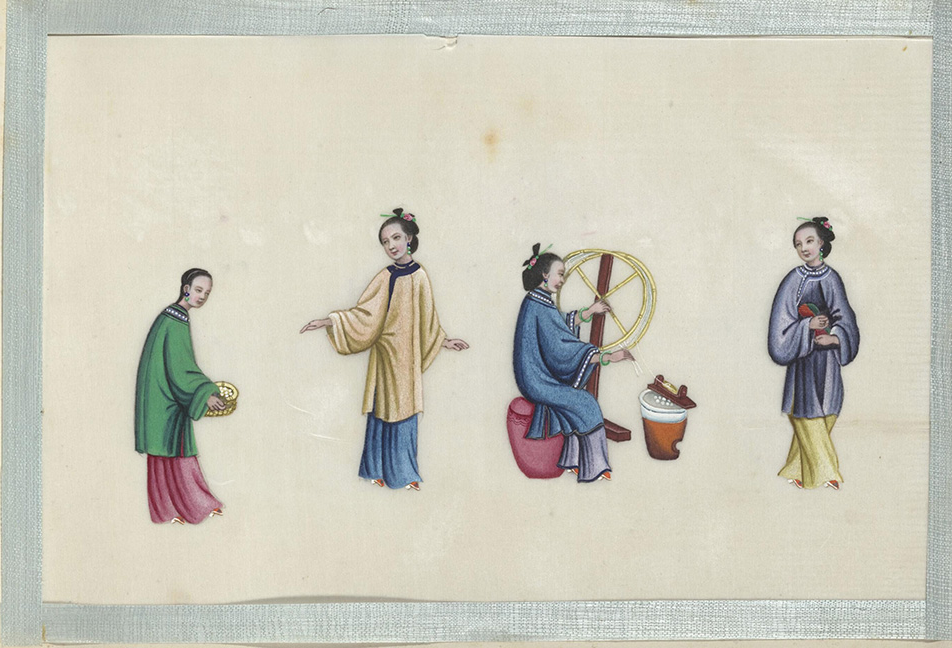Real silk is made from silk. Silk is the only filament in natural fibers, and fabrics woven with silk are bright, shiny, colorful and gorgeous to wear. Silk used for weaving silk have mulberry silk and quercus silk. Currently on the market silk products are mainly mulberry silk, composed of protein fibers. Silk protein fibers are enriched with hydrophilic groups, which are moisture-absorbent and breathable, making them comfortable and cool to wear. Silk products are more expensive. With the development of the chemical fiber industry, chemical filament appeared, and with chemical filament as raw material, simulated silk was produced. The raw material of imitation silk is mainly polyester fiber (polyester), and some of them use recycled cellulose fibers such as viscose. With polyester filament weaving simulation silk moisture absorption and breathability is generally poor.
How to identify the real silk? The following methods for your reference:
✿ Appearance:
Real silk surface gloss bright and soft, simulated silk surface bright, but not soft, there is "aurora borealis". Good silk is white, yellowish, will emit the luster, silk road uniform, no spots and other impurities, silk long elasticity is good. If the silk is pure white, no luster, there may be added bleach and other chemical agents, not only the silk road is not uniform, and there are many impurities.
✿ Touch with your hand:
Silk feels soft and smooth, touching the silk surface with a hand-pulling feeling;
Simulation of silk feel slightly hard. Comparison of dry silk, hand pinch, silk rubbing each other will sound similar to the sound of snow, commonly known as silk sound.
✿ Burning:
Take a bunch of silk yarn from the broken edge of the fabric and light it with a match. Silk fiber burning slowly, first curled up into a ball, emitting a similar smell of hair or bird feathers burnt, the bundle left the flame, that is, to stop burning, was a small black-brown ball, hand-pressed that is crumbled into powder.
Polyester fiber burning sweet smell, the residue is hard and black bead-like, hard pieces are not easy to crush. Viscose and other cellulose fiber filament burning paper burning smell, the residue is a little gray ash.
✿ Dissolve:
Silk dissolves in alkaline sodium hypochlorite solution, can take a small amount of fiber into the "84" disinfectant solution, silk can be completely dissolved, while polyester and viscose and other fibers can not.

Burning method, dissolving method is the most intuitive and effective way to identify the real silk products
✿ Price:
The price of silk quilt can be judged by the cost estimate, basically below the general cost of the price are counterfeit and inferior products. According to the latest silk price of $49-56/kg, if the price of silk quilt is under $28/kg according to the net weight of silk, there is a high probability that it is fake, and also add the fabric, labor cost, and so on.
✿Fiber strength:
Good silk strong stretch is better, hard pull will not be easily pulled apart, while counterfeit or poor quality light pull a bunch. The quality of silk is enhanced with the strengthening of the strong stretch, generally can be stretched to more than 100cm, and can restore the elasticity. Inferior quality products have poor performance of all fibers.
✿ Microscopic method:
Mulberry silk is triangular in cross-section. Quercus silk cross-section is elongated triangular, longitudinal surface is flattened banded, with fine stripes.
Ordinary polyester silk cross-section is round, longitudinal surface smooth. Viscose fiber cross-section has serrated edges, smooth longitudinal surface and clear stripe

Any fabric that contains other silk components is not 100% silk.



